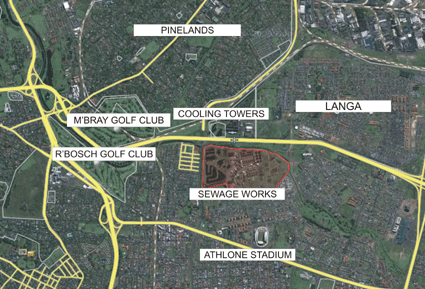When Eskom gave notice to the
City Council in 1951 of its intention not to renew the "pooling"
agreement when it expired on 12 May 1957, immediate attention
was given as to how the increasing demand for electricity
on the Council's system could best be met after this date.
The council then decided that, in the long-term,
it would be in their interest to build another coal burning
power station.
The principal factors to be considered in
selecting a suitable site were proximity to the load to
be supplied, an adequate supply of cooling water for the
condensers, convenient rail access for the delivery of coal
and proximity to labour.
Opposite Bokmakierie, which incidentally
was there before West London, now called Athlone, was the
City’s main sewage disposal works, and here over forty-five-million
litres of clarified sewage effluent were being discharged
to waste each day.
The site was also within a reasonable distance of the South
African Railway's marshalling yards at Woltemade, and it
was in close proximity to labor in nearby Langa.
The perfect spot.

The Athlone power station was
built in 1962 and the smell WAS from the cooling towers
BECAUSE the water used to cool the condensers was reclaimed
from the sewage works.
There you have it.
As for why this spot was chosen as the city’s
main sewage works?
Well, that’s another story.
